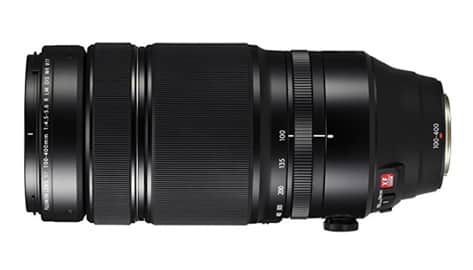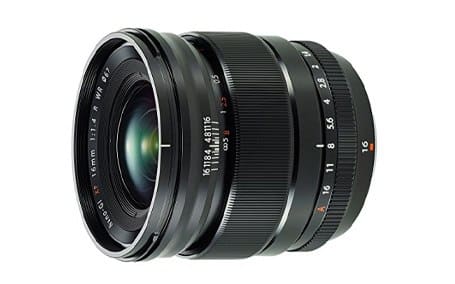Table of Contents
ToggleSelecting the Best Fujifilm Wildlife Lens
When it comes to wildlife photography, you usually want to get as close to your subject as possible. Sometimes that’s simply not possible, and in those moments you’ll need a quality telephoto lens for your Fujifilm camera.
Taking a few steps closer is always better than zooming, but not every animal will react the same. That’s why having the right lens for wildlife photography is very important, especially because the focal length is not the only thing that matters here!
Speaking about best wildlife lenses, one must also have fast auto focus that is accurate in all sorts of conditions, and an aperture that’s big enough to be used when there is not a lot of light. Animals are often the most active in dusk and dawn, couple that with rain and other bad weather conditions, and you’ll wish you spent a little bit more on a lens that is properly weather sealed.
Below, we’ll dive deeper into what makes a lens good for wildlife and birds, but first let’s check out what Fujifilm lenses we picked that we feel give you the most for your money.
Best Fujifilm Wildlife Lenses:
 Fujifilm XF 50-140mm f/2.8 R LM OIS WR
Fujifilm XF 50-140mm f/2.8 R LM OIS WR
Fujifilm XF 55-200mm f/3.5-4.8 R LM OIS
Fujifilm XF 100-400mm f/4.5-5.6 R LM OIS WR
If you decide to buy anything after clicking on our Amazon links, you automatically support us. It’s what allows us to write guides such as this one.
What’s Important for Wildlife & Bird Photography?

Here are the 6 most important factors that make a good wildlife lens. We focused on these points when selecting the lenses for this guide.
This is just a quick overview of what to be aware of, but if you want additional information read our guide on How to Select a Wildlife Lens and check out our tips on photographing wildlife.
Auto Focus – The lens needs to have fast and reliable auto focus. While this also depends on the camera you use, Fujifilm’s latest mirrorless models have AF systems that can handle wildlife and action very well. Fuji’s lenses with LM (Linear Motor) offer the best possible focusing performance, making it not only quick but also silent. This doesn’t mean non-LM lenses are bad, it’s just that by paying more, you get even better performance. Using a lens with no LM will still allow you to capture fast moving subjects. All 3 lenses we recommend have it!
Focal Length – The longer the lens, the better it is for wildlife/birds. Most of the time, you can’t get too close to the animal, which is where having the most reach helps the most. Anything over 100mm is an absolute must, whereas 300mm+ is for either small animals, or animals that are really far away. Fujifilm’s cameras have an APS-C sensor with 1.5x crop factor, so your lenses act as if they are 1.5x longer (the 100-400mm is equivalent to a 150-600mm lens on a full frame camera). If you don’t understand this, don’t worry, we already selected the best lenses.
Aperture – Fujifilm doesn’t have a lot of telephoto lenses available, so there’s not much to choose when it comes to the aperture available. The only f/2.8 tele zoom is the 50-140mm, and while its optically superb, it might not be long enough for your needs. For shooting in the zoo or animals that are relatively close, it will be great, but you can forget about shooting birds in the wild. Unless you’re very sneaky! For outside, f/4.5-5.6 will be perfect, but as soon as it gets dark, you will have to raise your ISO speed.
Weight & Size – Don’t forget that telephoto lenses are the heaviest of all. A tripod, or at least a monopod, is a must if you want to shoot for hours.
Image Stabilization – OIS (Optical Image Stabilization) is nice to have, but useless in 99% of wildlife situations. OIS only helps when your subject is still! It just so happens that all of our Fuji’s picks have OIS, but don’t count on it helping you in most cases. If you plan on recording videos though, having OIS helps tremendously.
Weather-Resistant – Many Fujifilm lenses are weather-resistant (look for “WR” in the lens name) which means it’s much much harder for dust, water, or any other particle to get in the actual lens. Now just because a lens doesn’t have WR in its name, it doesn’t mean a little bit of rain or dust will damage. It simply means you don’t have to worry that much when shooting in difficult weather conditions. Luckily for you, all of our Fuji’s lenses feature WR.
Fujifilm XF 50-140mm f/2.8 R LM OIS WR

The Fujifilm XF 50-140mm f/2.8 R LM OIS WR is quite pricey but well worth the expense. The barrel is weatherized in 20 places to provide constant protection from dust and water splashes. The lens will operate normally even in conditions as cold as 14F (-10C).
Due to its big f/2.8 aperture across the entire focal range, it’s a perfect choice for outdoors and indoors sports, as well as zoo’s, pets, and animals in the nature that aren’t too far away. f/2.8 allows you to get nice sharp subjects and blurred backgrounds with beautiful looking bokeh, thanks to 7 rounded aperture blades.
At long focal lengths shooting without a tripod can cause loss of sharpness. Fortunately, the 50-140mm f/2.8 is stabilized via an Optical Image Stabilization (OIS) system that negates motion blur in images. The body also has a tripod mount on the barrel for even more image stabilization as needed as well as an aperture ring for precision aperture control.
Using the APS-C sized sensor of Fujifilm’s X-series cameras, the lens has a full-frame equivalent focal length of 76-214mm. This makes it a solid zoom lens meant to bring far-off subjects into crisp focus and isolate them from the background. Portrait, street, and wildlife lovers will get a lot of use out of this focal range.
Notably the 55-200 f/3.5-4.8 which we talk about below, has an even better focal range for half the cost. However, you do lose out on the constant f/2.8 aperture across the range and the barrel tripod mount. The Fuji 50-140mm is weather sealed as well, making it more appropriate for photographing in difficult weather conditions. If range is all you want the f/3.5-4.8 will serve just as well, but the f/2.8 is well worth the additional money, especially if you know you will photograph in difficult light situations.
You can buy it at Amazon or see more reviews here.
Fujifilm XF 55-200mm f/3.5-4.8 R LM OIS

The Fujifilm XF 55-200mm f/3.5-4.8 R LM OIS is a fantastic outdoor spots, race, portrait and wildlife lens with a huge reach.
On the X-series’s APS-C sensor, this lens has a full-frame equivalent focal range of 84-305mm. With a 3.6 ft (1.1 m) minimum focusing distance, you need a bit of distance from the subject to capture the best view possible.
The barrel has an aperture ring for precision aperture control with 1/3 stop increments. The linear motor (LM) auto focus motors allow the lens to focus within 0.28 seconds and ensure the lens remains quiet and stable during focusing.
The Optical Image Stabilization (OIS) system provides up to four and a half stops of stabilization to make shooting handheld easier despite the long focal lengths. The glass also has a High Transmittance Electron Beam Coating (HT-EBC) to reduce ghosting, lens flare, and chromatic aberrations.
The 55-200mm f/3.5-4.8 is the toned down version of the 50-140mm f/2.8 lens. While the expanded focal range of the f/3.5 looks tempting the wider aperture of the latter lens is a tremendous advantage. The f/2.8 is also weather sealed for lovers of the outdoors. But for half the price of the f/2.8 the f/3.5 is still an excellent zoom lens. Keep in mind that because of its aperture, this is not a lens for indoors, so get it if you know you will mostly shoot outdoors (from races to sports, too wildlife, zoos and kids running around).
You can buy it at Amazon or see more reviews here.
Fujifilm XF 100-400mm f/4.5-5.6 R LM OIS WR
 The Fujifilm XF 100-400mm f/4.5-5.6 R LM OIS WR is the ultimate choice for wildlife, sports and outdoor photographers. While its aperture is not as wide as the 50-140mm f/2.8, this lens is unbeatable when it comes to reach.
The Fujifilm XF 100-400mm f/4.5-5.6 R LM OIS WR is the ultimate choice for wildlife, sports and outdoor photographers. While its aperture is not as wide as the 50-140mm f/2.8, this lens is unbeatable when it comes to reach.
With the APS-C sized X-series sensor, it has an equivalent focal range of 150-600mm on a full frame sensor. Fortunately, it has a focus limiter switch to speed auto focus time. You can select between 5.7 ft (1.7 m) or 16.4 ft (5.0 m) out to infinity as the range the auto focus hunts through.
The barrel has both an aperture ring for precision manual aperture control, as well as a barrel tripod mount for additional image stabilization. The lens also has 13 weather seals to prevent dust and water splashes including light rain from penetrating into the barrel. Thanks to this, it can operate in temperatures as low as 14F (-10C).
The Fujifilm 100-400mm also has built in Optical Image Stabilization (OIS) that provides five stops of stabilization, to mitigate even the smallest amounts of motion blur from hand shake. This is extremely useful since hand holding such a big lens is not an easy task. The glass has a fluorine coating to protect against smudges and dirt, a common thing when shooting in the nature.
At 4.2 lbs (1.9 kg), this is the largest lens in Fuji’s series. However, the features and sheer reach of the 100-400mm f/4.5-5.6 R puts it in a league of it’s own. If you’re looking for the best sports/wildlife choice, this is it.
You can buy it at Amazon or see more reviews here.
Fujifilm Lens Terms:
XF – Highest quality Fujifilm lenses for X-mount (X-T2, X-T1 and so on)
WR – Weather Resistant construction
OIS – Optical Image Stabilization
LM – Linear Motor, allows faster and near silent focusing
R – The lens has a dedicated aperture ring
Our Most Recommended Fujifilm Wildlife Lenses
 Fujifilm XF 50-140mm f/2.8 R LM OIS WR
Fujifilm XF 50-140mm f/2.8 R LM OIS WR
Fujifilm XF 55-200mm f/3.5-4.8 R LM OIS
Fujifilm XF 100-400mm f/4.5-5.6 R LM OIS WR
Here is an excellent article on using Fujifilm’s telephoto lenses for wildlife.
Related Articles
Best Fujifilm Lenses for Landscape in 2022
Fujifilm’s lenses and mirrorless cameras are a perfect combination for landscape photography. There are plenty of sharp wide-angle zooms and...
Read MoreFirst and foremost, I’m a husband and father. Then professionally I’m photographer, designer, blogger, and Esty store owner. My homebase is near the stunning Wasatch mountains in Utah but I love traveling with my family as part of our homeschooling journey. I also love teaching and helping out others. My faith is one of the biggest aspects of my life and brings be a consistent joy that I haven’t found in anything else. My main blog is BestPhotographyGear.com and I strive to make photography simple for anyone looking to learn or find gear for their individual needs. By nature, I like to study, research, and analyze things and I use that help provide the best advice and reviews I can.


